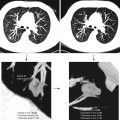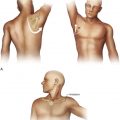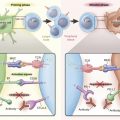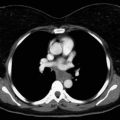Summary of Key Points
- •
Addressing tobacco dependence in patients with cancer increases the quality of care by reducing their risk for treatment complications, improving their prognosis, and reducing the risk of disease recurrence and second primary cancers.
- •
Smoking cessation after a diagnosis of lung cancer has been shown to have a beneficial effect on performance status.
- •
Many patients with cancer who smoke want to quit but unfortunately do not receive support and evidence-based tobacco treatment.
- •
Further provider training and research are needed to determine strategies to implement best practices for treating tobacco dependence among patients with cancer.
- •
In the absence of tobacco cessation interventions, lung cancer specialists are encouraged to follow general clinical practice guidelines for treating tobacco use and dependence.
- •
Lung cancer screening provides an invaluable opportunity to promote tobacco cessation.
- •
There is much debate and little data as to whether e-cigarettes or other electronic nicotine delivery devices will facilitate or impede smoking cessation.
In 1964, the landmark US Surgeon General’s report, Smoking and Health, first linked smoking to lung cancer. This irrefutable knowledge about the harms of tobacco spawned five decades of tobacco prevention and control research and policy, resulting in a rich compendium of comprehensive national and international evidence-based, population-based, and clinical practice guidelines aimed at reducing tobacco-related morbidity and mortality. Smoking not only has a causal link with disease and death but also has adverse effects on outcomes for patients with a wide range of chronic diseases, including cancer. Now more than ever, tobacco cessation is firmly within the purview of modern oncology. By highlighting the specific adverse effects of persistent tobacco use on cancer outcomes, this chapter provides justification for why lung cancer specialists should assess and treat tobacco use and direction for how lung cancer specialists can help their patients stop smoking.
Why Lung Cancer Specialists Should Help Their Patients Stop Tobacco Use
Cigarette smoking is the primary risk factor responsible for 87% and 70% of lung cancer deaths in men and women, respectively, making tobacco prevention and cessation essential goals for lung cancer prevention and control. Despite five decades of national and international public health accomplishments in reducing the morbidity, mortality, and economic costs of tobacco-induced diseases, there are currently an estimated 42.1 million current smokers (18.1% of all adults) in the United States alone and at least one billion smokers worldwide. Tobacco kills nearly six million people each year; more than five million of those deaths are the result of direct tobacco use, and more than 600,000 are the result of nonsmokers being exposed to secondhand smoke. Unless urgent action is taken, the annual death toll could rise to more than eight million by 2030.
Risks of Persistent Smoking and Benefits of Cessation on Lung Cancer Outcomes
Health-care providers who treat patients with cancer may assume that it is too late after diagnosis to intervene about smoking. However, an emerging body of evidence demonstrates that smoking is associated with several adverse outcomes for patients with cancer, such as increased complications from surgery, increased treatment-related toxicity, decreased treatment effectiveness, poorer quality of life, increased risk of recurrence, increased risk of second primary tumors, increased noncancer-related comorbidity and mortality, and decreased survival. Although the number of clinical studies on the effects of smoking cessation in patients with cancer is limited, the existing data suggest that many of the adverse effects of smoking can be reduced with cessation.
Although these adverse outcomes are applicable to patients diagnosed with a wide range of cancers, much of this research has focused on identifying the adverse effects of smoking for patients diagnosed with lung cancer. Continued smoking after the diagnosis of lung cancer has been associated with treatment delays and increased complications from surgery, radiotherapy, and chemotherapy. Adverse effects from continued smoking at the time of surgery include complications from general anesthesia, increased risk of severe pulmonary complications, and detrimental effects on wound healing. Complications from smoking while receiving radiotherapy include reduced treatment efficacy and increased toxicity and side effects. Smoking while receiving chemotherapy alters the metabolism of many chemotherapy drugs, decreases the effectiveness of treatment, and increases drug toxicity. Smoking cessation before lung cancer treatment reduces the risk of recurrence and the development of additional smoking-related cancers. Although further research is needed to examine the beneficial effects of smoking cessation in patients with cancer, smoking cessation after a diagnosis of lung cancer has been shown to have a beneficial effect on quality of life and performance status.
Prevalence of Persistent Smoking Among Patients With Lung Cancer
Despite these risks, at least 15.1% of all adult cancer survivors report current cigarette smoking. Patients with lung cancer tend to be motivated to quit smoking at higher rates than patients diagnosed with other cancers. Focusing exclusively on the prevalence of smoking in lung cancer, 90.2% of patients with lung cancer report ever-smoking. At the time of diagnosis, 38.7% of patients with lung cancer report current smoking, whereas 5 months after diagnosis, at least 14.2% of patients with lung cancer report current smoking. Despite heavy encouragement to quit smoking and strong intentions to quit, continued tobacco use after diagnosis and resumption of smoking after initial quit attempt remains a problem in this patient population, with an estimated 10% to 20% of all patients with lung cancer smoking at some point after diagnosis.
Factors Associated With Persistent Smoking Among Patients With Lung Cancer
Physicians who treat patients with cancer, especially lung cancer specialists, may not understand why some patients continue to smoke. A few studies have examined factors associated with persistent smoking and smoking relapse after quit attempts. For patients with lung or head and neck cancer who were smoking within the week before surgery, smoking relapse in the following year was predicted by lower baseline quitting self-efficacy, higher tendency for depression, and greater fears about cancer recurrence; whereas among patients who had stopped smoking before surgery, higher perceived difficulty quitting and lower cancer-related risk perceptions predicted smoking relapse. In another longitudinal study of patients with early-stage lung cancer, low household income, exposure to environmental tobacco smoke at home, and evidence of depression were positively associated with return to smoking. In a particularly noteworthy study, Park et al. also examined factors associated with continued smoking among patients with lung cancer enrolled in the national, population-based Cancer Care Outcomes Research and Surveillance (CanCORS) cohort; at 4 months after diagnosis, younger age, more advanced disease, history of cardiovascular disease, lower social support, poorer perceived health, higher fatalism, greater pain, and depression were all identified as significant factors associated with continued smoking ( p < 0.05).
Assessing Tobacco Use and Integrating Evidence-Based Tobacco Treatment is an Indicator of High-Quality Oncology Care
Addressing tobacco dependence in patients with cancer increases the quality of care by reducing their risk for treatment complications, improving their prognosis, and reducing the risk of disease recurrence and second primary cancers. Clinicians have a responsibility to their patients to provide them with the best quality of care possible, and this care should include cessation treatment for those patients who smoke. Growing awareness of the cancer-specific health risks, the emerging lines of evidence that quitting smoking may improve the prognosis for patients with cancer, and the prevalence of persistent smoking provide a strong argument for providing evidence-based treatment of tobacco dependence as a standard of quality care in cancer settings. , , In fact, there is a growing consensus among oncology leadership organizations that assessment of tobacco use and treatment should be a metric for quality of care. As such, oncologists are encouraged to assess smoking status and advise cessation for patients who smoke. In keeping with this quality-of-care perspective, the American Society of Clinical Oncology’s Quality Oncology Practice Initiative (ASCO QOPI) includes documentation of current smoking status and counseling for all smokers, by the second office visit, as a core quality indicator. In recognition of the few number of clinical trials that assess tobacco use, a National Cancer Institute-American Association for Cancer Research (NCI-AACR) Task Force on Tobacco Use and Assessment has recommended assessment of tobacco use in cancer clinical trials.
Delivery of Evidence-Based Tobacco Dependence Treatment in Cancer Settings is Currently Suboptimal
Many patients with cancer who smoke want to quit but do not receive support and evidence-based tobacco treatment. During cancer treatment, many smokers are not even advised to quit, and after cancer treatment is completed, tobacco use is often not addressed. In a recent survey of ASCO members, the ASCO Tobacco Subcommittee found that oncologists provide quitting advice to 25% of their patients. In addition, most cancer care settings have not yet established tobacco cessation treatment as standard care; a 2012 survey found that 97% of NCI-designated comprehensive cancer centers in the United States said that having a tobacco treatment program was “very important,” but only half had any type of tobacco treatment program.
Most germane to determining the current status of assessing and treating tobacco dependence among patients with lung cancer are the findings of an online survey of International Association for the Study of Lung Cancer (IASLC) members, which addressed the practices, perceptions, and barriers to tobacco assessment and cessation in patients with thoracic cancer. More than 90% of the 1507 physician respondents (representing 40.5% of all IASLC members) said that current smoking affects outcome and that cessation should be a standard part of clinical care. At the initial patient visit, 90% said they ask patients about tobacco use, 79% said they ask patients whether they will quit, and 81% said they advise patients to stop tobacco use, but only 40% said they discuss medication options, and 39% said they actively provide cessation assistance; fewer respondents said they address tobacco use at follow-up. Respondents identified pessimism regarding their ability to help patients stop using tobacco (58%) and concerns about patient resistance to treatment (67%) as the leading barriers. Only 33% said they felt adequately trained to provide cessation interventions.
These survey findings highlight the need to examine barriers to tobacco treatment delivery in cancer care. Barriers to addressing tobacco use include patient-related factors (shame, helplessness, addiction), physician-related barriers (lack of training and referral options, beliefs about patients’ lack of interest or ability to quit), and system-level factors (inadequate identification of smokers, costs) that impede the delivery of effective tobacco programs. In recognition of this problem, the NCI convened a conference to review the state of tobacco treatment at NCI-designated comprehensive cancer centers and formulate recommendations for improvement. The survey findings underscore the considerable need for further provider training and research aimed at determining strategies to implement best practices for treating tobacco dependence among patients with cancer.
Treatment of Tobacco Dependence in Lung Cancer Care
As summarized in a recent review, randomized controlled trials of pharmacologic and counseling interventions for cessation conducted with tobacco-dependent patients with cancer have generally not shown significant treatment effects, with 6-month point abstinence rates ranging from 14% to 30% among patients assigned to the intervention conditions. Few randomized controlled trials have been conducted to test the effectiveness of cessation pharmacotherapy for patients with cancer who smoke. Schnoll et al. conducted a placebo-controlled trial to evaluate the efficacy of bupropion and found benefit (reduced withdrawal symptoms and increased abstinence rates) only for the subset of patients with cancer who had symptoms of depression. In a pilot study, Park et al. found significantly higher quit rates among patients with thoracic cancer who received varenicline and intensive counseling than among patients who received usual (unspecified) care (smoking abstinence at 3 months: 34.4% vs. 14.3%; p = 0.18). Ostroff et al. examined the utility of adding a presurgical tapering regimen to nicotine-replacement therapy and cessation counseling by telephone and found a 32% rate of smoking abstinence at 6-month follow-up for both interventions. In terms of optimal timing for the delivery of tobacco treatment, it appears that the closer to the time of diagnosis that smoking cessation treatment is delivered, the higher the likelihood for continued smoking abstinence. These findings illustrate the need for continued development and evaluation of novel smoking cessation interventions that are acceptable and efficacious for patients with cancer and are feasible to deliver across a wide range of cancer care settings. In the absence of tobacco cessation interventions tailored and targeted to patients with cancer, lung cancer specialists are encouraged to follow general clinical practice guidelines for treating tobacco use and dependence.
Guidelines for Treating Tobacco Use
Most recently updated in 2008, the US Public Health Service Treating Tobacco Use and Dependence Clinical Practice Guideline (PHS guideline) recommends that evidence-based tobacco treatment be delivered to all smokers in health-care settings. Specifically, these guidelines recommend that a combination of medication and counseling be used, that counseling involve multiple sessions, and that clinicians use the five As: ask, assess, advise, assist, and arrange. Clinicians, especially thoracic cancer specialists, are encouraged to ask all their patients about their smoking status at every encounter. Once current smokers are identified, clinicians should assess their readiness to quit in order to determine what forms of assistance are needed. Smokers’ quitting readiness is commonly classified as either precontemplation (no immediate plans to quit), contemplation (plan to quit within 6 months), preparation (planning to quit within a month), action (quitting for less than 6 months), or maintenance (staying quit for at least 6 months). Clinicians should strongly advise their patients against smoking, providing a personalized risk of persistent smoking and benefits of cessation in relation to the patient’s disease and treatment. The next A, assist, speaks to the active role the clinician should play in his or her patients’ cessation efforts by providing education, addressing barriers to quitting (such as concerns about coping), suggesting behavioral strategies that may help them overcome these barriers, developing a quit plan, and prescribing pharmacotherapy, as needed. For patients who are reluctant to quit, clinicians need to provide motivational counseling in an effort to encourage them to at least reduce their daily cigarette consumption. Considering the high rate of smoking relapse, patients who have recently quit (maintenance phase) should be reassessed for smoking lapses and given prolonged support and encouragement to remain abstinent from smoking. Lastly, clinicians are encouraged to arrange follow-up support, such as reevaluation of the smoking status during subsequent visits or referrals to other resources, such as quit-lines or onsite tobacco treatment specialists.
Pharmacotherapy
The PHS guideline strongly recommends that pharmacotherapy be used along with counseling in order to optimize cessation outcomes. Several medications are safe and effective for smoking cessation: nicotine-replacement therapies (in the form of a patch, gum, lozenge, nasal spray, or inhaler), bupropion, and varenicline ( Table 3.1 ).
| Pharmacotherapy | Dosage | Duration (wks.) | Availability | Precautions/Contraindications | Adverse Effects | Patient Education |
|---|---|---|---|---|---|---|
| Nicotine patch | If smoking ≥11 cigarettes/d: 21 mg/24 h 14 mg/24 h 7 mg/24 h If smoking ≤10 cigarettes/d: 14 mg/24 h 7 mg/24 h | 6 2 2 6 2 | Over the counter | Uncontrolled hypertension | Skin irritation (redness, swelling, itchiness) Sleep disruptions (nightmares, vivid dreams) | Rotate patch site daily Remove patch before bedtime if sleep is disrupted and bothersome |
| Nicotine polacrilex gum | If smoking ≤24 cigarettes/d: 2 mg If smoking ≥25 cigarettes/d: 4 mg | Up to 12 | Over the counter | Poor dentition Xerostomia | Hiccups Upset stomach Jaw ache | Chew gum on a fixed schedule Chew each piece of gum and then place between the gums and cheek for 30 min (so-called chew and park) Avoid eating or drinking anything except water 15 min before chewing and during chewing Do not exceed 24 pieces of gum in 24 hours |
| Nicotine lozenge | If smoking first cigarette more than 30 min after waking up: 2 mg If smoking first cigarette within 30 min after waking up: 4 mg | Up to 12 | Over the counter | Xerostomia | Local irritation to mouth and throat Upset stomach | Avoid eating or drinking anything except water 15 min before and during use of a lozenge The lozenge will take 20–30 min to dissolve Do not use more than 20 lozenges in 24 h |
| Nicotine inhalation system | 6–16 cartridges/d | Up to 26 | Prescription | Local irritation to mouth and throat Upset stomach | Each cartridge will take 80–100 inhalations over 20 min Puff on inhaler like a cigar | |
| Nicotine nasal spray | 0.5 mg/inhalation/nostril 1–2 times/h (or as needed) | Up to 12 | Prescription | Sinus infections | Irritation to nose, eye, or upper respiratory system | Nasal irritation may become less bothersome with continued use |
| Bupropion | Days 1–3: 150 mg daily Thereafter: 150 mg twice daily | 12 | Prescription | History of seizures History of eating disorders (bulimia, anorexia) | Insomnia Xerostomia Restlessness Dizziness | Overlap with smoking for 1–2 weeks Do not need to be tapered off drug |
| Varenicline | Days 1–3: 0.5 mg daily Days 4–7: 0.5 mg twice daily Day 8–end of treatment: 1 mg twice daily | 12 a | Prescription | Kidney problems or treatment with dialysis Pregnancy or plan to become pregnant Breastfeeding | Mild nausea Sleep problems Headaches | Take medication with a full glass of water after eating a meal Allow 8 h between each dose Take medication a few hours before bedtime to avoid restlessness |
Stay updated, free articles. Join our Telegram channel

Full access? Get Clinical Tree








